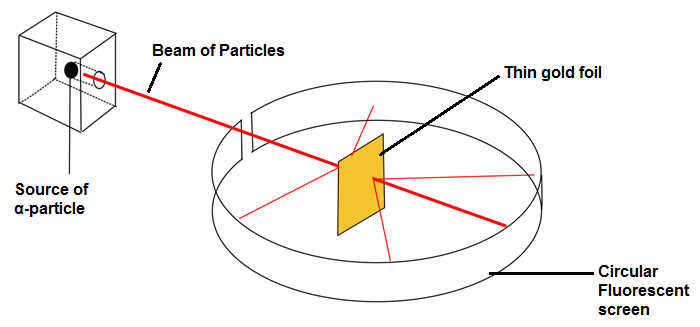
What is the impact parameter in a scattering experiment?
Answer
584.7k+ views
Hint: The impact parameter is the perpendicular distance to the adjacent approach if the projectile were unpivoted in the scattering process. This is assigned in physics related to nuclear science like Rutherford scattering.
Complete step by step answer:
The impact parameter is explained as the upright distance between the route of a projectile and the centre of a potential field invented by an object that the projectile is impending.
According to the individual impact factor principle, collisions can be restricted in colliding beam procedure. There are three types of collisions possible, which is given below –
Central collisions contain $b\approx 0$.
Peripheral collisions contain 0 < b < 2R.
Ultra peripheral collisions contain b > 2R.
Where R = Radius of shattering nuclei as interacted with hard surfaces.

In a Rutherford scattering alpha experiment, “Impact parameter is the upright distance between the gold nucleus and the control of the velocity vector of alpha particle when the alpha particle is at eternal distance like the force of synergy between the gold nucleus and alpha particle is particularly small where the gold nucleus is at repose.”
The resilient scattering of debited particles by the coulomb synergy is called Rutherford scattering. Physicist Ernest Rutherford in 1911 has discovered this physical phenomenon. The relationship between the impact factor and scattering factor is given as –
$\theta =\pi -2b\int\limits_{{{r}_{\min }}}^{\infty }{\dfrac{dr}{{{r}^{2}}\sqrt{1-{{\left( \dfrac{b}{r} \right)}^{2}}-\dfrac{2U}{mv_{\infty }^{2}}}}}$ ……………………………. (1)
Where ${{\upsilon }_{\infty }}$ = Velocity of projectile when it is far from center.
${{R}_{\min }}$ = Nearest distance from the center.
Note: Always remember that the impact factor is vertical distance from projectile surface and note that it is the perpendicular distance between the projectile path and potential field’s center.
Complete step by step answer:
The impact parameter is explained as the upright distance between the route of a projectile and the centre of a potential field invented by an object that the projectile is impending.
According to the individual impact factor principle, collisions can be restricted in colliding beam procedure. There are three types of collisions possible, which is given below –
Central collisions contain $b\approx 0$.
Peripheral collisions contain 0 < b < 2R.
Ultra peripheral collisions contain b > 2R.
Where R = Radius of shattering nuclei as interacted with hard surfaces.

In a Rutherford scattering alpha experiment, “Impact parameter is the upright distance between the gold nucleus and the control of the velocity vector of alpha particle when the alpha particle is at eternal distance like the force of synergy between the gold nucleus and alpha particle is particularly small where the gold nucleus is at repose.”
The resilient scattering of debited particles by the coulomb synergy is called Rutherford scattering. Physicist Ernest Rutherford in 1911 has discovered this physical phenomenon. The relationship between the impact factor and scattering factor is given as –
$\theta =\pi -2b\int\limits_{{{r}_{\min }}}^{\infty }{\dfrac{dr}{{{r}^{2}}\sqrt{1-{{\left( \dfrac{b}{r} \right)}^{2}}-\dfrac{2U}{mv_{\infty }^{2}}}}}$ ……………………………. (1)
Where ${{\upsilon }_{\infty }}$ = Velocity of projectile when it is far from center.
${{R}_{\min }}$ = Nearest distance from the center.
Note: Always remember that the impact factor is vertical distance from projectile surface and note that it is the perpendicular distance between the projectile path and potential field’s center.
Recently Updated Pages
A man running at a speed 5 ms is viewed in the side class 12 physics CBSE

The number of solutions in x in 02pi for which sqrt class 12 maths CBSE

State and explain Hardy Weinbergs Principle class 12 biology CBSE

Write any two methods of preparation of phenol Give class 12 chemistry CBSE

Which of the following statements is wrong a Amnion class 12 biology CBSE

Differentiate between action potential and resting class 12 biology CBSE

Trending doubts
What are the major means of transport Explain each class 12 social science CBSE

Which are the Top 10 Largest Countries of the World?

Draw a labelled sketch of the human eye class 12 physics CBSE

Explain sex determination in humans with line diag class 12 biology CBSE

Explain sex determination in humans with the help of class 12 biology CBSE

Differentiate between homogeneous and heterogeneous class 12 chemistry CBSE




